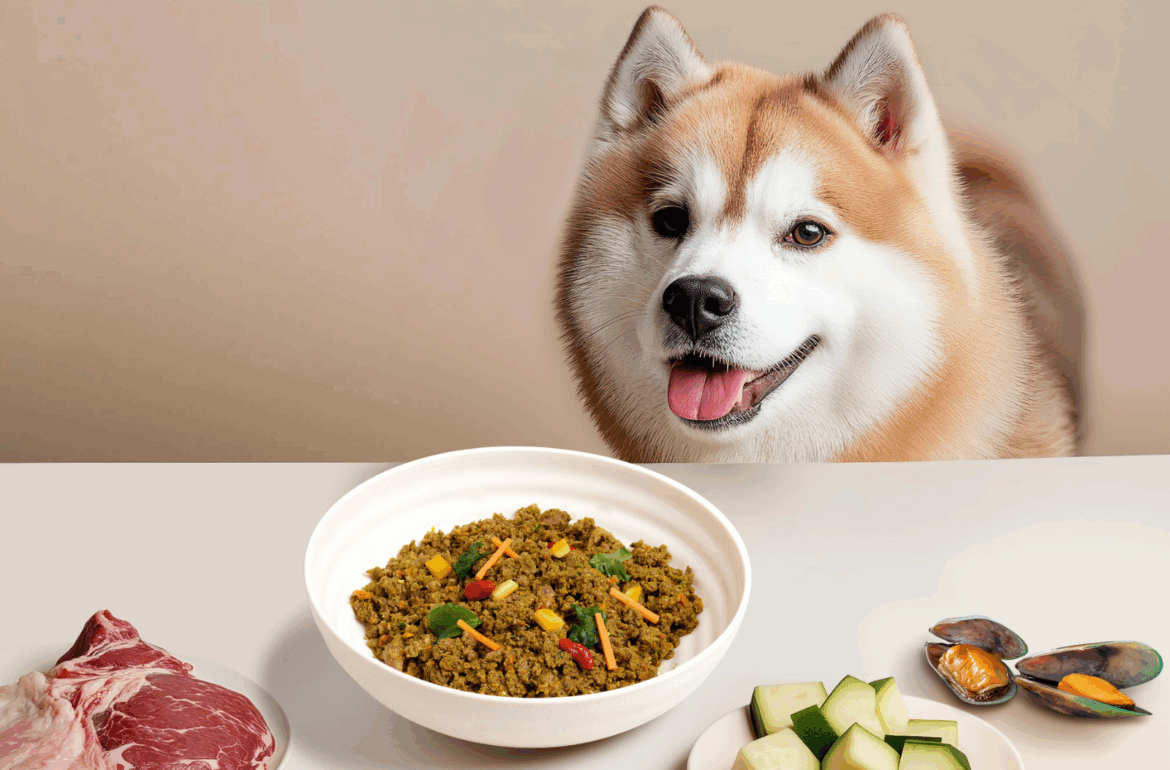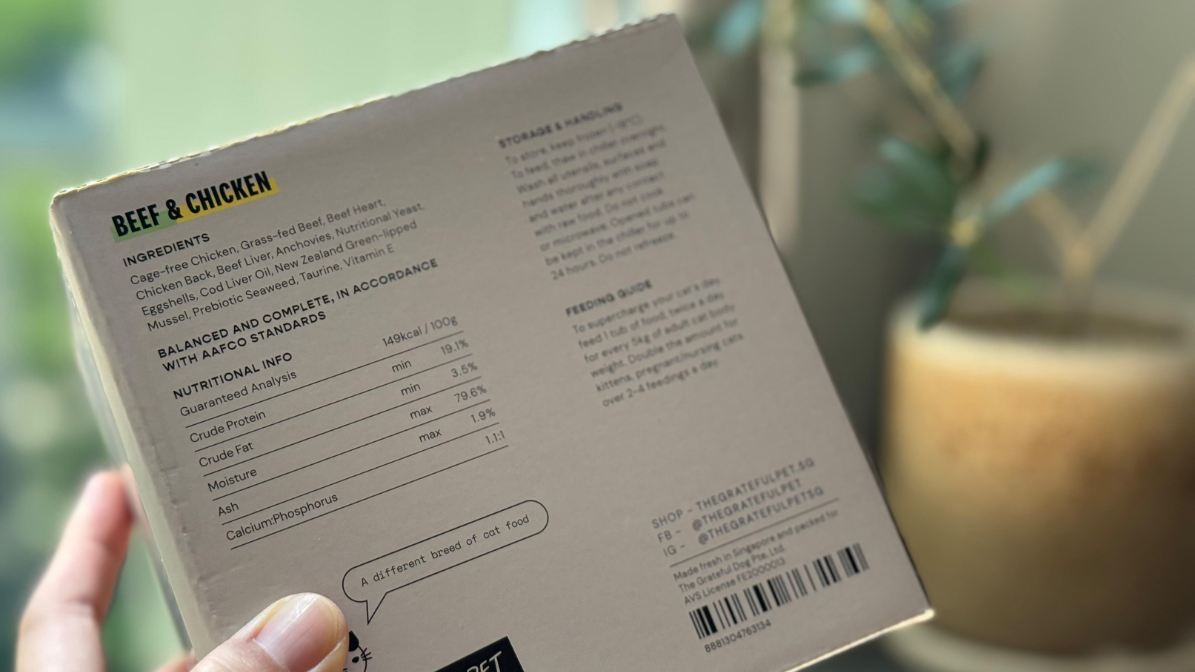Why Grain-Free Pet Food Isn’t a Fad

Grain-free pet food has often been framed as a passing trend — something fueled by human diet fads rather than true pet health needs. Yet, when we look deeper into its origins and its ongoing role in pet nutrition, it becomes clear that grain-free isn’t just a marketing buzzword. For many pets, particularly those with specific health issues or sensitivities, grain-free diets can provide meaningful benefits. At the same time, it’s important to acknowledge the controversies surrounding this diet and to understand why not all grain-free foods are made equal.
At The Grateful Pet, we believe in transparent, research-backed nutrition. Here’s why grain-free is here to stay — and what pet parents should really know about it.
A Diet Rooted in Pet Health, Not Trends
Grain-free formulas emerged long before they became a supermarket buzzword. The concept grew from an understanding of companion animals’ evolutionary diets. Cats are obligate carnivores, meaning they require nutrients from animal tissue to thrive. Dogs, while more omnivorous, still have digestive systems that are better adapted to proteins and fats than large amounts of grain.

For pets with food sensitivities to grains such as wheat, corn, and soy have often been linked to digestive upset, itchy skin, and chronic ear infections. Although not all pets are intolerant to grains, eliminating them can help reduce inflammation and discomfort in sensitive individuals.
Research has shown that certain grains, such as wheat, can trigger significant adverse reactions in sensitive dogs. In a landmark study on Irish Setters, dogs fed wheat developed intestinal inflammation, including shortened villi and increased immune cell activity, while their littermates on a wheat-free diet remained healthy [1]. When wheat was reintroduced, symptoms quickly returned, confirming wheat as the root cause.
This highlights that for some pets, grains are not just benign fillers but potential contributors to chronic itching, digestive distress, and inflammation. Grain-free diets, therefore, are more than a passing trend — they can be a practical and scientifically supported solution for improving pet health.
The Controversy: Grain-Free and Heart Health
Grain-free diets became controversial in 2018 when the U.S. Food and Drug Administration (FDA) announced it was investigating a potential link between certain grain-free diets and a heart condition called dilated cardiomyopathy (DCM) [2]. The concern arose because many grain-free kibble recipes relied heavily on legumes such as peas, lentils, and chickpeas to replace grains.
These legumes play a part in cutting costs in pet food production. Where protein should be abundant, certain manufacturers replace them with legumes. These ingredients, when used in large amounts, were suspected to interfere with taurine — an amino acid critical for heart health.
Studies into the relationship between grain-free diets and DCM have since yielded mixed results. A review in the Journal of Animal Science highlighted that taurine deficiency in dogs can indeed contribute to DCM, but the cause is multifactorial [3]. Genetics, breed predisposition, and diet formulation all play a role. In fact, some breeds like Golden Retrievers are naturally more prone to taurine-deficiency DCM, regardless of diet.
What’s important to note is that the FDA did not issue a recall of grain-free diets nor establish a definitive cause-and-effect relationship. Instead, the concern underscored a critical truth: not all grain-free diets are the same. A poorly formulated grain-free kibble that replaces grains with excessive legumes is very different from a balanced, whole-food grain-free diet that uses high-quality animal protein as the foundation.
Not All Grain-Free Foods Are Created Equal
This brings us to the heart of the issue: formulation matters. Just because pet food is labeled “grain-free” doesn’t mean it automatically promotes good health. Pet parents need to look beyond the label.
One of the most common mistakes in mass-market grain-free pet foods is using legumes as the primary ingredient. While peas and lentils are not inherently bad, when they dominate the ingredient list, the result is a diet that is still heavy in plant matter and relatively low in bioavailable animal protein. This imbalance can affect nutrient absorption and, over time, a pet’s overall health.
A well-formulated grain-free diet, on the other hand, prioritizes real, high-quality animal proteins, supplemented with nutrient-rich fruits, vegetables, and superfoods. It avoids artificial preservatives and fillers while ensuring essential amino acids, vitamins, and minerals are balanced for long-term health.

When evaluating grain-free foods, pet parents should ask:
- Is whole meat the first ingredient?
As the ingredient list is ordered by weight, animal-based protein should be the first ingredient. There should also be a breakdown of protein type, such as meat and organs (kidney, spleen, liver, etc.). Dubious labeling with “meal” or “byproducts” should be avoided.
- Are legumes used sparingly, rather than as the bulk of the recipe?
While recommended to avoid, sparing use of legumes would be fine. It should be listed near the end of the ingredient list, before vitamins and minerals.
- Are there whole-food inclusions (like organ meats, vegetables or even fruit) that provide natural sources of micronutrients?
For dogs, as they are omnivores, there should be an array of vegetables and fruits. They provide different sources of vitamins and minerals where meat alone cannot provide. This also promotes healthy gut microbiota with an array of good bacteria [4].
For cats, being obligate carnivores does not mean just consuming purely meat. Superfoods such as prebiotic seaweed are great for supporting their digestive health. Hence, looking out for beneficial, species-appropriate ingredients is important.
- Is the food formulated or reviewed by veterinary nutritionists or professionals?
Pet food from a reputable source should be reviewed by veterinary professionals and be complete and balanced according to the AAFCO and NRC guidelines. These guidelines and accreditations help give validity to the food so you can feed your pet with peace in mind.
These questions help distinguish between a grain-free diet that’s simply avoiding grains and one that’s truly crafted to nourish pets. Here’s a video that covers more on the telltale signs of high quality pet food.
How The Grateful Pet Does Grain-Free Right
At The Grateful Pet, grain-free isn’t just a label — it’s a commitment to nourishing pets with real, fresh food. Our grain-free meals are formulated to support pets’ natural biology with a foundation of fresh, high-quality animal proteins like cage-free chicken, grass-fed beef, and novel proteins such as kangaroo. These are complemented by scientifically backed superfoods, including New Zealand green-lipped mussels for joint health, prebiotic seaweed for gut support, and reishi mushrooms (for our dog food recipes) for immune defense.
Unlike many mass-produced grain-free options, our recipes do not rely on legumes or fillers. Instead, each recipe is carefully balanced to ensure pets receive complete and highly bioavailable nutrition. Importantly, all meals are reviewed by veterinarians and prepared in an AVS-certified facility, ensuring the highest standards of safety and quality.
We also believe in full transparency. Every ingredient is listed clearly, so pet parents know exactly what they are feeding their pets. And with meals gently cooked or raw-frozen for maximum nutrient retention, you can trust that your pet is eating the closest thing to a natural diet.
References
[1] Food allergy in canines: A review—Research Gate, January 2017 https://www.researchgate.net/publication/348743039_Food_allergy_in_canines_A_review
[2] FDA Investigation into Potential Link between Certain Diets and Canine Dilated Cardiomyopathy—FDA, December 2022 https://www.fda.gov/animal-veterinary/outbreaks-and-advisories/fda-investigation-potential-link-between-certain-diets-and-canine-dilated-cardiomyopathy
[3] Taurine deficiency and dilated cardiomyopathy in golden retrievers fed commercial diets—PLOS one, December 2018 https://journals.plos.org/plosone/article?id=10.1371/journal.pone.0209112
[4] Fresh Food Consumption Increases Microbiome Diversity and Promotes Changes in Bacteria Composition on the Skin of Pet Dogs Compared to Dry Foods—PubMed, Animals, July 2022 https://pmc.ncbi.nlm.nih.gov/articles/PMC9329806


